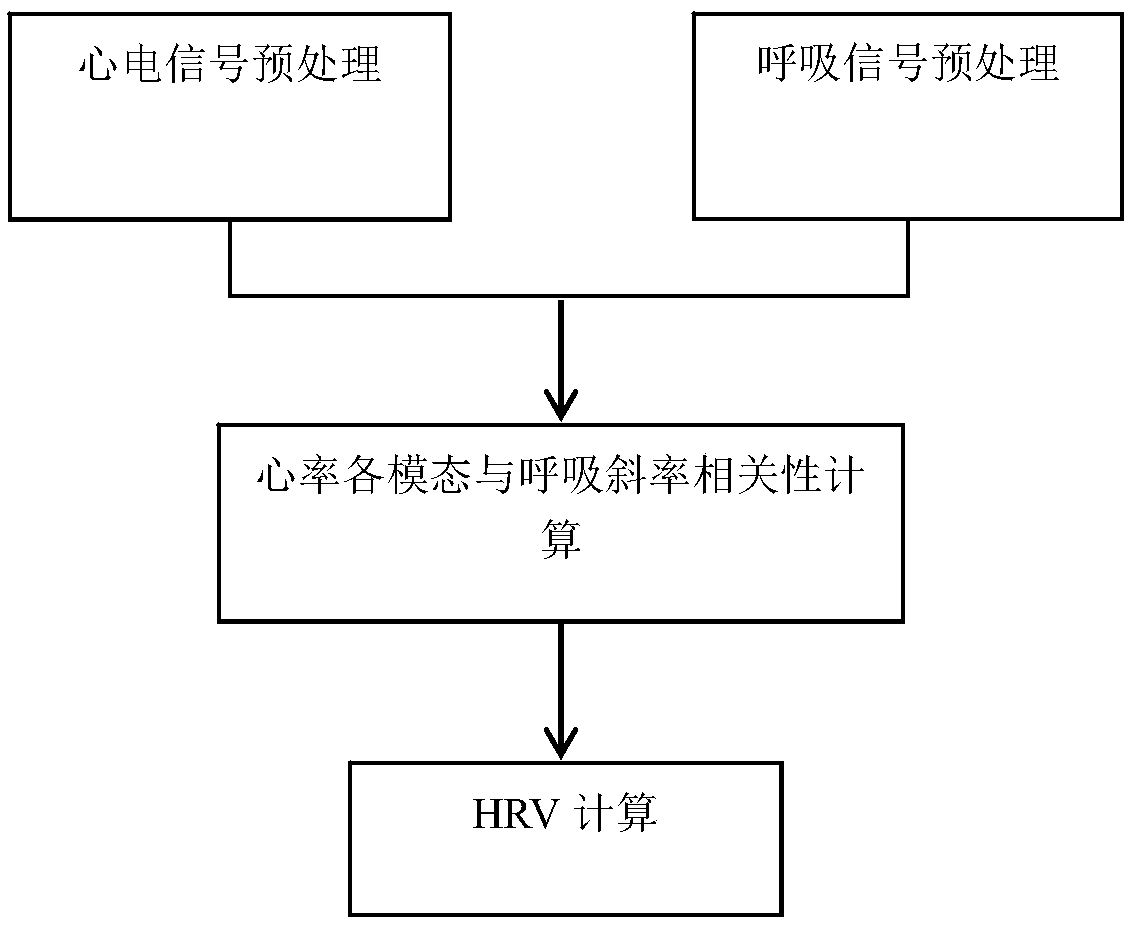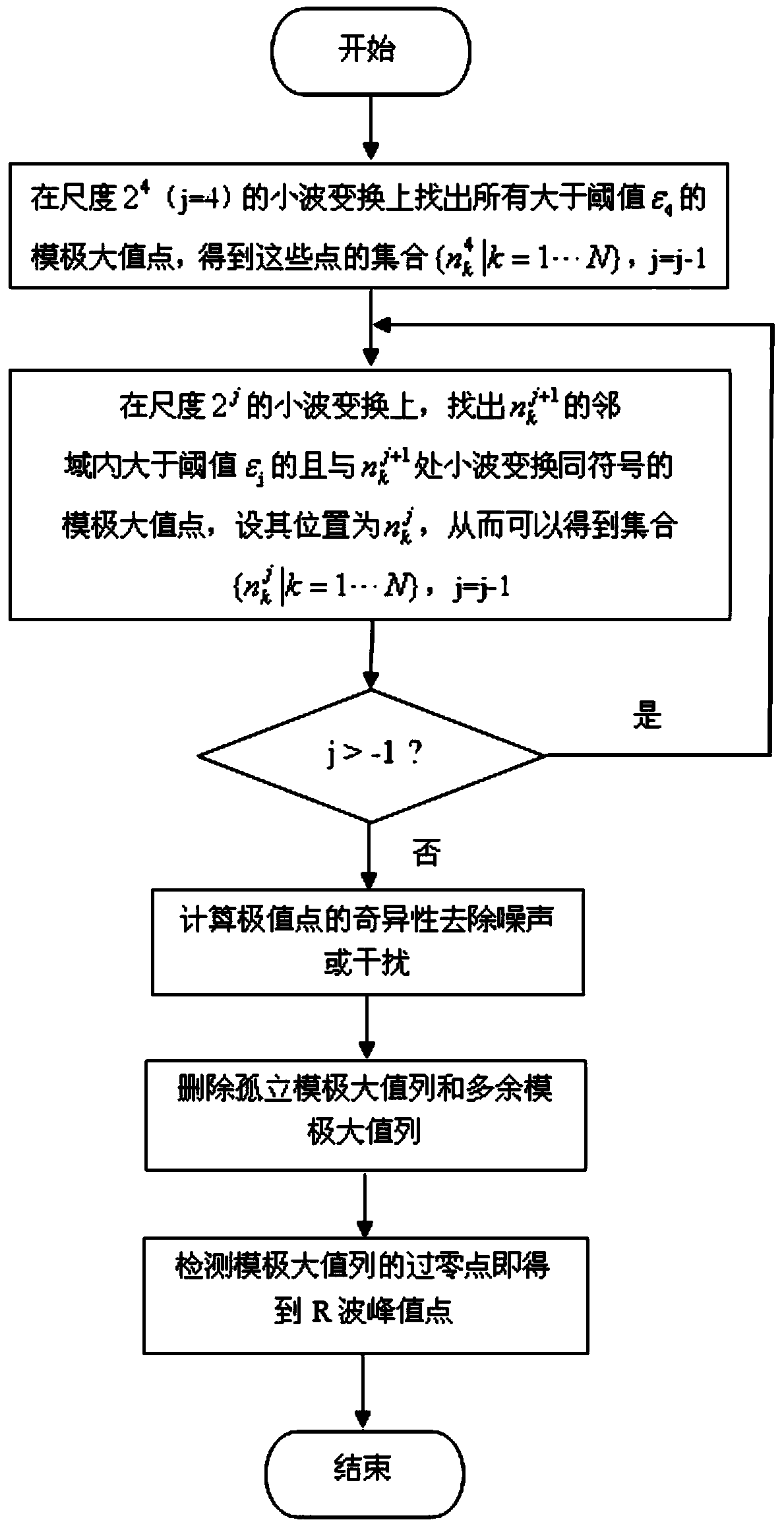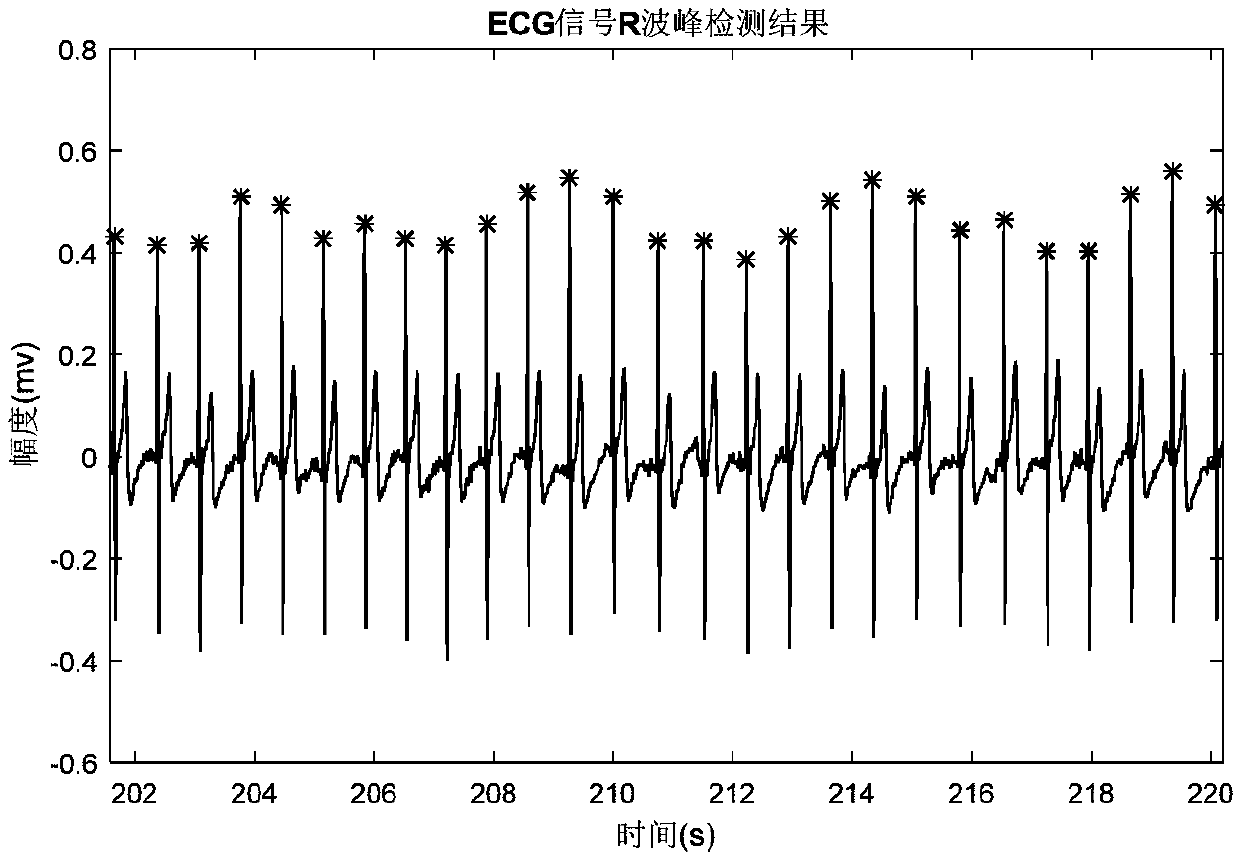Method for combining electrocardiogram with respiration to calculate heart rate variability on basis of EMD decomposition
A heart rate variability and heart rate technology, applied in the field of biomedical signal processing, can solve problems such as inability to describe, and achieve the effect of avoiding the inconsistency of experimental results
- Summary
- Abstract
- Description
- Claims
- Application Information
AI Technical Summary
Problems solved by technology
Method used
Image
Examples
Embodiment Construction
[0043] The present invention is described in further detail below in conjunction with accompanying drawing:
[0044] Such as figure 1 As shown, a method for calculating heart rate variability based on EMD decomposition of ECG and respiration, comprising the following steps:
[0045] Step 1), synchronously collect the ECG signal ecg(t) and the respiratory signal res(t) of the subject;
[0046] Step 2), for the collected original ECG signal ecg(t), first use wavelet decomposition to remove baseline drift and high-frequency noise, and obtain the denoised ECG signal x(t); then use the wavelet modulus maximum value method, the selected wavelet is the db2 wavelet that supports compact support and has the first-order vanishing moment, detects the R peak, and then inspects and modifies the detection results to obtain a series of sets R(N) of continuous R peak time points; for the R peak For the set R(N) of time points, subtract the time point R(n) of the previous peak from the time...
PUM
 Login to View More
Login to View More Abstract
Description
Claims
Application Information
 Login to View More
Login to View More - R&D
- Intellectual Property
- Life Sciences
- Materials
- Tech Scout
- Unparalleled Data Quality
- Higher Quality Content
- 60% Fewer Hallucinations
Browse by: Latest US Patents, China's latest patents, Technical Efficacy Thesaurus, Application Domain, Technology Topic, Popular Technical Reports.
© 2025 PatSnap. All rights reserved.Legal|Privacy policy|Modern Slavery Act Transparency Statement|Sitemap|About US| Contact US: help@patsnap.com



